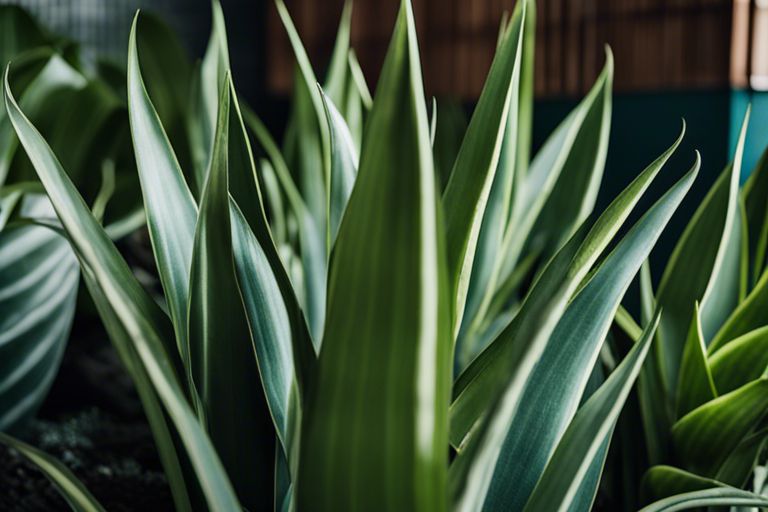There’s a widespread misconception that all snake plants are tropical, but the reality is more nuanced. Sansevieria species are diverse, adaptable plants that can thrive in a range of environments, from arid deserts to tropical rainforests. Understanding the habitat of these plants is crucial to providing them with the proper care they need to thrive in your home.
Key Takeaways:
- Snake plants are native to tropical regions: Sansevieria species are primarily found in tropical regions such as Africa, Madagascar, and southern Asia.
- They can adapt to different climates: Despite their tropical origins, snake plants have shown resilience and can adapt to a variety of climates, including arid conditions.
- Proper care is imperative: While snake plants can thrive in various environments, they still require specific care such as well-draining soil, occasional watering, and adequate sunlight to ensure their health and growth.


Understanding Sansevieria: Botanical Profile
Taxonomy and Classification
On the journey to understand the Sansevieria plant, it is imperative to explore into its taxonomy and classification. The genus Sansevieria belongs to the Asparagaceae family, which also includes popular houseplants like Dracaena and Yucca. There are over 70 different species of Sansevieria, each with its unique characteristics and habitat preferences.
Physical Characteristics and Varieties
One of the most striking features of Sansevieria plants is their sword-shaped leaves that can vary in both size and color. These leaves can grow upright or in a rosette formation, depending on the species. Some common varieties include Sansevieria trifasciata, Sansevieria cylindrica, and Sansevieria ehrenbergii.
Another important aspect to consider is that Sansevieria plants are renowned for their air-purifying abilities. They can remove toxins like formaldehyde and benzene from the air, making them excellent additions to indoor spaces. Additionally, Sansevieria plants are incredibly hardy and can thrive in low light conditions and tolerate periods of drought, making them ideal for beginners or those with a busy lifestyle.

Natural Habitats of Sansevieria Species
Once again, delving into the natural habitats of Sansevieria species reveals a fascinating insight into where these plants thrive in the wild.
Geographic Distribution
One notable feature of Sansevieria species is their wide geographic distribution across Africa, Madagascar, and southern Asia. These plants can be found in a variety of habitats, including rocky hillsides, savannas, and forests, showcasing their adaptability to different environments.
Climatic Conditions in Native Regions
To understand the climatic conditions in the native regions of Sansevieria species is crucial in replicating their ideal growing environment. These plants typically grow in regions with consistent warmth and sunlight, with some species even thriving in arid conditions. The dry seasons in their native habitats play a significant role in their growth cycle, influencing their dormancy and growth periods.
Understanding the climatic conditions and terrain of the natural habitats of Sansevieria species is imperative for successfully caring for these plants in cultivation. By mimicking their native environments as closely as possible, enthusiasts can ensure the health and longevity of these fascinating plants.
The Tropical Question: Are Snake Plants Truly Tropical?
Defining ‘Tropical’ in Botanical Terms
With the term ‘tropical’ often associated with lush rainforests and high humidity levels, it’s crucial to define what it means in botanical terms. In botany, ‘tropical’ refers to regions near the equator with consistently warm temperatures throughout the year. These regions typically have high levels of biodiversity and support a wide variety of plant species adapted to thrive in such conditions.
Examining Sansevieria’s Presence in Tropical Zones
One of the most intriguing aspects of the snake plant, or Sansevieria species, is its presence in tropical zones. While some species of Sansevieria are native to Africa, specifically the tropical regions of the continent, others have been introduced to tropical regions around the world. These plants have demonstrated their ability to adapt and thrive in tropical climates, showcasing their resilience and versatility in various environmental conditions.
Truly, the presence of Sansevieria in tropical zones challenges the conventional perception of what it means to be a ‘tropical’ plant. Their ability to survive and even flourish in these regions sheds light on the hardiness and adaptability of snake plants, making them a fascinating subject for further study and appreciation.
Adaptations of Sansevieria to Their Environment
Drought Tolerance and Water Storage Mechanisms
On average, the Sansevieria species are renowned for their impressive adaptation to arid environments. Their ability to thrive in low-water conditions is due to their remarkable drought tolerance and efficient water storage mechanisms. Sansevieria plants have succulent leaves that store water, allowing them to withstand long periods of drought without withering. The thick, fleshy leaves of the Snake Plant are structured to retain moisture, enabling the plant to survive in harsh conditions where water is scarce.
Light Requirements and Shade Tolerance
An important aspect of the adaptation of Sansevieria plants to their native habitat is their light requirements and shade tolerance. Sansevieria species are known for their ability to thrive in low light conditions, making them ideal plants for indoor settings with minimal sunlight. While they can tolerate low light, these plants also do well in bright, indirect light, showcasing their versatility in various lighting conditions.
Storage Some Sansevieria species exhibit a unique adaptation known as C4 photosynthesis, which allows them to efficiently process carbon dioxide and thrive in low light environments. This adaptation enables Sansevieria plants to maximize their photosynthetic efficiency, making them well-suited for environments with limited sunlight.
Cultivation and Care in Non-Tropical Regions
Indoor Cultivation: Mimicking Natural Habitat
Not all snake plants are native to tropical regions, which makes them ideal for cultivation in non-tropical areas. To successfully grow these plants indoors, it is important to mimic their natural habitats as closely as possible. Snake plants prefer well-draining soil that replicates the sandy conditions of their native environments. They also thrive in indirect sunlight, so placing them near a window with filtered light is crucial.
Outdoor Cultivation in Temperate Climates
Mimicking the snake plant’s natural habitat in outdoor settings can also lead to thriving growth in temperate climates. The key to successful outdoor cultivation in temperate regions lies in selecting a spot with well-draining soil and ensuring that the plant receives adequate sunlight while still being protected from harsh direct light. Additionally, snake plants are resilient to drought conditions, so occasional dry spells should not pose a problem.
The hardiness of snake plants makes them suitable for outdoor cultivation even in regions with colder winters. However, it is crucial to protect them from frost, as prolonged exposure to freezing temperatures can damage or kill the plant. Providing a layer of mulch around the base of the plant can help insulate the roots and protect them during colder months.
Sansevieria in Cultural Contexts and Human Usage
Historical Uses of Sansevieria Plants
After extensive research into the cultural contexts and human usage of Sansevieria plants, it is evident that these resilient succulents have been intertwined with human history for centuries. Sansevieria species have been utilized for various purposes, with historical records indicating their use in traditional medicine, fiber production, and even spiritual practices. In many cultures, Sansevieria plants hold symbolic significance and are believed to bring good luck and protection to the household.
Sansevieria in Modern Ornamental Horticulture
Sansevieria plants have seen a surge in popularity in modern ornamental horticulture due to their adaptability and striking aesthetic qualities. Sansevieria species are prized for their air-purifying abilities, making them a favorite choice for indoor spaces. Their low maintenance requirements and tolerance for low light conditions have made them a staple in homes, offices, and interior landscapes around the world.
Human fascination with Sansevieria plants continues to grow as more cultivars and hybrids are introduced to the market, offering a wide variety of shapes, sizes, and colors to choose from. Whether used for their beauty, functionality, or symbolism, Sansevieria plants remain a beloved addition to any living space, connecting us to their rich cultural heritage and adding a touch of natural elegance to our surroundings.
Conclusion
On the whole, snake plants, particularly those of the Sansevieria genus, are indeed tropical plants. Originating from regions of Africa and Southeast Asia, these plants thrive in warm and humid environments. Their ability to adapt to various conditions, including low light and infrequent watering, makes them popular houseplants worldwide.
Understanding the natural habitat of Sansevieria species can help provide the best care and environment for these tropical plants to flourish. By mimicking their tropical origins through proper light, water, and temperature conditions, snake plants can continue to thrive and provide their unique air-purifying benefits to indoor spaces.
